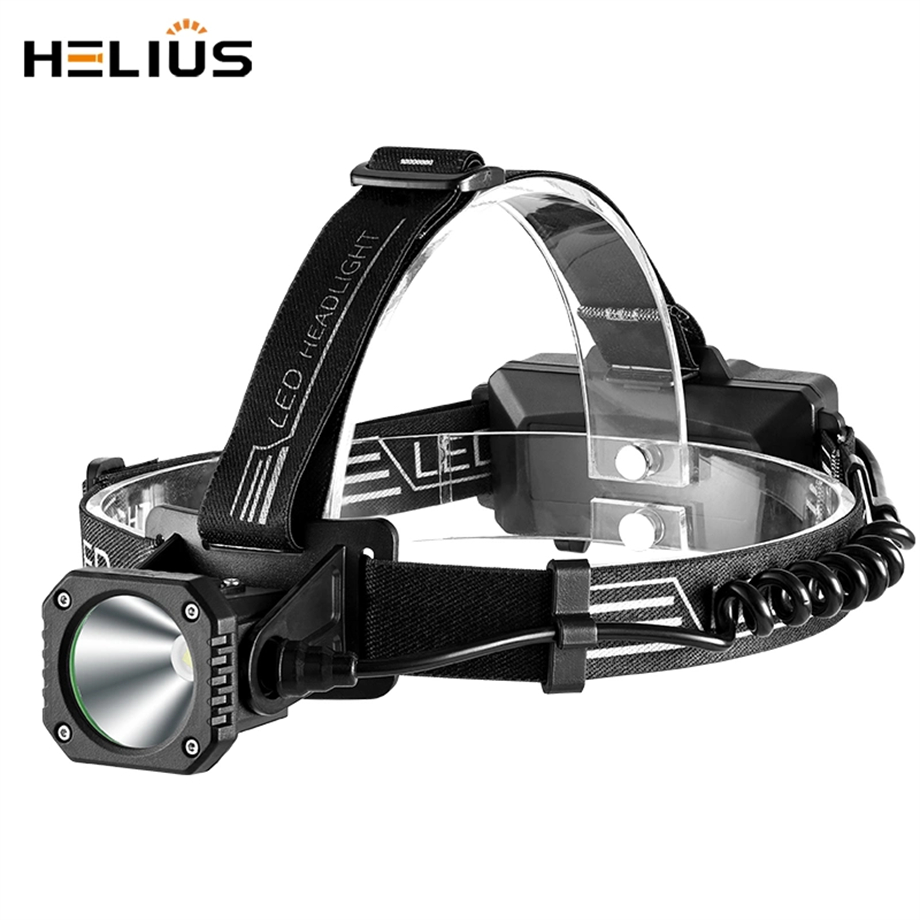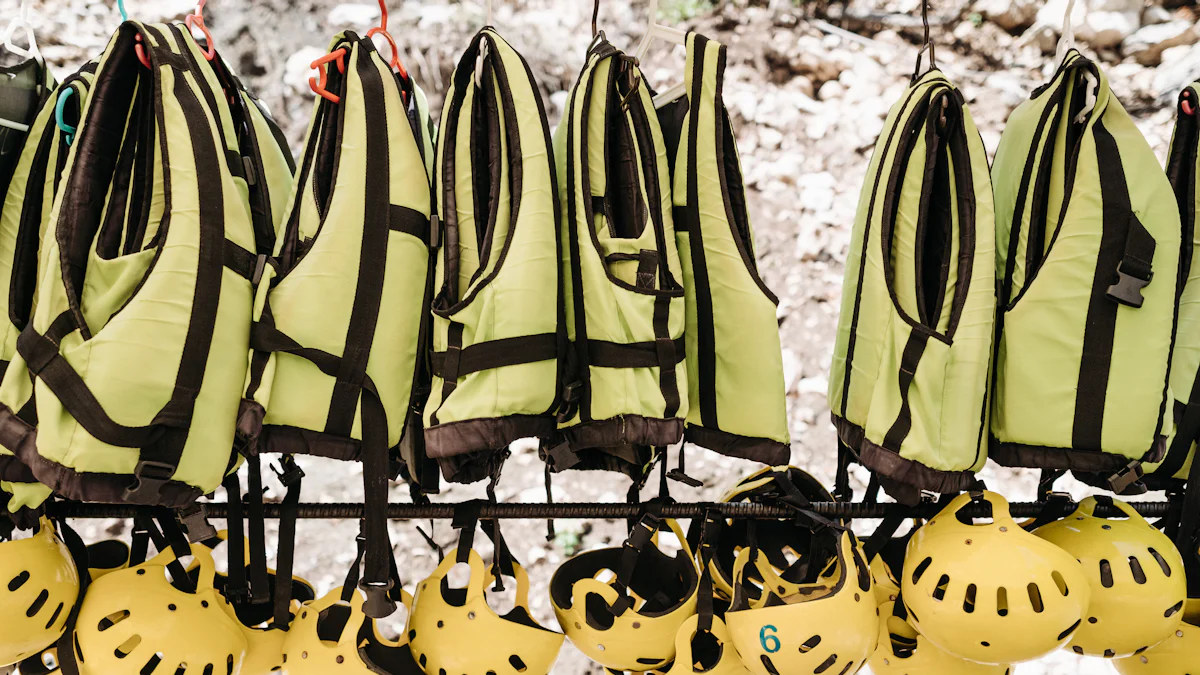How to Ensure Flashlights Are Tested for Safety Before Selling to Outdoor Enthusiasts

When selling flashlights to outdoor enthusiasts, you must prioritize safety. A poorly tested flashlight can fail during critical moments, putting users at risk. Rigorous testing ensures reliability and builds trust with your customers. It also promotes user safety and enhances satisfaction. By meeting industry standards, you strengthen your reputation and improve your manufacturing processes. Knowing how to ensure flashlights are tested for safety before selling to outdoor enthusiasts helps you deliver products that meet their needs and expectations.
Key Takeaways
Make safety a priority by checking flashlights meet ANSI/PLATO FL1 rules. This ensures they work well for outdoor activities.
Learn about IP ratings to pick flashlights that block water and dust. Choose ones with higher ratings for better outdoor protection.
Use approved batteries to avoid overheating or explosions. Look for safety labels like UL or IECEx for extra safety.
Test flashlights for drops, water resistance, and battery safety. This makes sure they work well in real-life situations.
Create a checklist before making flashlights to find problems early. This helps keep safety and quality high before selling them.
Key Safety Standards for Flashlights
ANSI/PLATO FL1 Standards
When choosing a reliable flashlight, you should look for products that meet ANSI/PLATO FL1 standards. These standards define key performance parameters, ensuring flashlights are safe and effective for outdoor use. They measure critical aspects like light output, beam distance, peak beam intensity, run time, impact resistance, and water resistance. For example, rigorous testing under these standards ensures that a flashlight can withstand drops or exposure to water without failing. This transparency helps you compare products and select top-rated flashlights for your needs. By adhering to these standards, manufacturers improve product quality and build trust with consumers.
IP Ratings for Water and Dust Resistance
IP ratings (Ingress Protection) indicate how well a flashlight resists water and dust. These ratings use two numbers to show protection levels. The first number measures dust resistance, while the second measures water resistance. For instance, a flashlight with an IP67 rating is completely dustproof and can handle immersion in water up to one meter for 30 minutes. This makes it ideal for wilderness adventures or emergency situations. The table below explains the specific requirements for IP ratings:
First Digital | Dust Protection Rating |
|---|---|
1 | Protected against solid objects over 50mm |
2 | Protected against solid objects over 12.5mm |
3 | Protected against solid objects over 2.5mm |
4 | Protected against solid objects over 1mm |
5 | Limited protection against dust |
6 | Totally protected against dust |
Second Digital | Waterproof Protection Rating |
|---|---|
1 | Protected against vertically falling drops |
2 | Protected against sprays up to 15 degrees |
3 | Protected against sprays up to 60 degrees |
4 | Protected against splashes from any direction |
5 | Protected against low-pressure water jets |
6 | Protected against high-pressure water jets |
7 | Protected against immersion up to 1 meter |
8 | Protected against continuous immersion |
9 | Protected against high-pressure, high-temp jets |
Understanding these ratings ensures you select a flashlight that matches your outdoor or emergency needs.
Battery Safety Certifications
Batteries play a crucial role in flashlight safety and performance. Certified batteries reduce risks like overheating, leakage, or explosions. Look for certifications such as UL Standards in North America, ATEX Directive in Europe, or IECEx System globally. These certifications ensure batteries meet strict safety requirements, especially for hazardous environments. For example, UL 913 focuses on flashlights used in explosive atmospheres, ensuring they remain safe under extreme conditions. By choosing certified batteries, you guarantee a flashlight that performs reliably and safely in any situation.
Region | Safety Standard | Description |
|---|---|---|
North America | UL Standards | Governed by Underwriters Laboratories, specifically UL 913 for hazardous locations. |
Europe | ATEX Directive | Regulates equipment for explosive atmospheres, marked with the ‘EX’ symbol. |
International | IECEx System | Provides certification for equipment in explosive atmospheres, recognized globally. |
Essential Flashlight Testing Procedures

Impact Resistance Testing
Impact resistance testing ensures a flashlight can withstand accidental drops and maintain functionality. This process involves dropping the flashlight from specific heights onto a concrete surface. For example, a flashlight is typically dropped from 1.2 meters to simulate real-world conditions. After each drop, you assess the flashlight for damage and confirm it remains operational. This test identifies potential design flaws that could compromise durability.
Some flashlights undergo more rigorous testing to meet higher standards. For instance, firefighter lanterns are dropped onto metal stairs to ensure they can handle extreme environments. The table below highlights common drop tests:
Drop Height | Surface | Conditions | Result |
|---|---|---|---|
1 meter | Concrete | All parts included | Must remain functional |
18 ft | Concrete | All parts included | Must remain functional |
6 ft | Concrete | All parts included | Must remain functional |
30 ft | Concrete | All parts included | Must remain functional |
Metal stairs | Varies | Firefighter lanterns | Must remain functional |
By conducting these tests, you ensure your flashlight is a reliable tool for outdoor enthusiasts and emergency situations.
Waterproof and Dustproof Testing
Waterproof and dustproof testing evaluates a flashlight's ability to resist environmental elements. To begin, you determine the IP rating to be tested and prepare the necessary equipment, such as a water basin. Use a new flashlight with no visible damage. Activate the flashlight and immerse it in water or expose it to dust for the required duration. After testing, inspect the flashlight for moisture or dust inside and confirm all functions work properly.
For example, an IPX4-rated flashlight endures water sprays from all directions for up to 10 minutes. Higher ratings, like IP67, allow immersion in water up to one meter deep for 30 minutes. These tests ensure the flashlight performs reliably in wilderness or low-light conditions.
Battery and Electrical Safety Testing
Battery and electrical safety testing ensures the flashlight operates safely under various conditions. Start with temperature tests to determine the flashlight's performance in extreme heat or cold. Next, conduct humidity tests to evaluate its resistance to moisture.
You should also verify the flashlight's built-in safety features. Overheating protection prevents damage during prolonged use. Battery protection mechanisms, such as overcharge and short circuit protection, reduce risks of malfunction. Additionally, check the electrical insulation to prevent shocks. These steps guarantee a reliable flashlight that meets safety and quality standards.
Performance Testing for Outdoor Conditions
Performance testing ensures a flashlight works effectively in real-world outdoor scenarios. You need to evaluate how it performs under various environmental conditions to guarantee reliability and durability. This testing process helps you identify whether the flashlight can handle the challenges of wilderness adventures or emergency situations.
Start by assessing the flashlight's brightness and beam distance. Use a controlled environment to measure its light output and ensure it meets the advertised specifications. A top-rated flashlight should provide consistent illumination, even in low-light or foggy conditions. Next, test the runtime by operating the flashlight continuously until the battery depletes. This step verifies the quality of the battery and ensures it lasts long enough for outdoor activities.
Temperature testing is another critical step. Expose the flashlight to extreme heat and cold to confirm it functions properly in harsh climates. For example, you can place it in a freezer or near a heat source for a set duration. Afterward, check if the flashlight operates without issues. Humidity testing is equally important. Simulate damp environments to ensure the flashlight resists moisture and maintains its performance.
Finally, test the flashlight's durability by simulating rugged outdoor use. Shake it vigorously or place it on vibrating surfaces to mimic rough handling. This step ensures the internal components remain intact and the flashlight continues to function. By conducting these tests, you can confidently offer a high-quality product that meets the demands of outdoor enthusiasts.
Tip: Always document your testing results to track improvements and maintain consistent quality standards.
Tools and Equipment for Flashlight Testing

Testing Environments for Safety and Reliability
Creating the right environment for flashlight testing is essential to ensure safety and reliability. You need a controlled space that mimics real-world conditions. For example, a waterproof testing area should include water basins or spray systems to simulate rain or immersion. Dust chambers are necessary for testing flashlights in sandy or dusty environments, such as during wilderness adventures. Temperature-controlled rooms allow you to evaluate performance in extreme heat or cold, ensuring the flashlight works in diverse climates.
You should also consider specialized environments for hazardous conditions. Intrinsically safe flashlights are designed to operate in areas with flammable gases, vapors, or dust. These flashlights limit electrical and thermal energy to prevent ignition. Testing them in simulated hazardous environments ensures they meet safety standards and perform reliably in emergencies.
Essential Tools for Flashlight Testing
To test flashlights effectively, you need the right tools. These tools help you evaluate durability, quality, and performance under various conditions. Some essential tools include:
Luminous intensity measurement devices to assess brightness and beam distance.
Impact test equipment to simulate drops and ensure durability.
Waterproof and dustproof testing setups for IP rating verification.
Shakeout and vibration test machines to mimic rough handling.
Bending test tools to check structural integrity.
Salty spray chambers to test resistance to corrosion.
Ultraviolet radiation testers to evaluate exposure to sunlight.
Environmental test chambers for temperature and humidity testing.
Switch test machines to verify button reliability over repeated use.
These tools ensure you can test every aspect of a flashlight's design. For example, temperature tests confirm that batteries and internal components function in extreme conditions. By using these tools, you can confidently produce top-rated flashlights that meet the needs of outdoor enthusiasts and emergency responders.
Tip: Regularly calibrate your testing equipment to maintain accuracy and ensure consistent quality results.
Addressing Common Flashlight Safety Issues
Design Flaws and Durability Concerns
Design flaws can compromise the durability and reliability of a flashlight. Poor material choices, such as low-quality plastics, often lead to cracks or breaks during regular use. Weak seals around buttons or battery compartments allow water or dust to enter, reducing performance. You should also watch for poorly designed switches that fail after repeated use. These issues can leave users stranded during outdoor safety situations or emergencies.
To address these concerns, manufacturers must prioritize quality materials and robust designs. Aluminum or stainless steel bodies provide better durability than plastic. Rubber seals and reinforced buttons improve resistance to environmental elements. Rigorous testing, such as drop tests and vibration simulations, ensures the flashlight withstands real-world conditions. By focusing on these aspects, you can deliver a product that meets the demands of outdoor enthusiasts.
Battery-Related Safety Issues
Battery-related problems pose significant safety risks. Lithium-Ion batteries, for instance, can explode if mishandled. Using incompatible batteries increases the chance of overheating or short circuits. Storing spare batteries near heat, cold, or liquids can lead to accidents. These risks highlight the importance of proper battery management.
You should always use batteries recommended by the flashlight manufacturer. Built-in safety features, like overcharge protection, reduce the risk of malfunctions. Storing spare batteries in protective cases away from extreme temperatures ensures their safety. Regularly inspecting batteries for damage or leaks also helps maintain reliability. By following these practices, you enhance the flashlight’s quality and ensure user safety.
Environmental Performance Challenges
Outdoor conditions test a flashlight’s performance and durability. Extreme temperatures, high humidity, and exposure to dust or water can cause failures. For example, flashlights without proper insulation may stop working in freezing weather. Dust can clog internal components, while water can damage circuits.
To overcome these challenges, you should choose flashlights with high IP ratings. Models with IP67 or higher resist water and dust effectively. Temperature testing ensures the flashlight operates in both hot and cold climates. Humidity resistance prevents moisture from affecting performance. These features guarantee reliability in outdoor safety scenarios and emergencies.
Tip: Always check the flashlight’s specifications to ensure it meets your outdoor needs.
Manufacturer’s Checklist for Flashlight Safety Compliance
Pre-Production Safety Checklist
Before starting production, you need to ensure every flashlight meets essential safety and quality standards. A pre-production safety checklist helps you identify potential issues early. This step ensures your flashlights are reliable and safe for outdoor enthusiasts. Use the table below to guide your pre-production inspections:
Component | Description |
|---|---|
Visual Inspection | Check switches, buttons, battery compartment, LED, and optics for defects. |
Functional Testing | Evaluate power output, beam distance, battery runtime, and waterproofing. |
Safety Assessment | Inspect overheating protection, battery protection, and electrical insulation. |
Compliance with Standards | Ensure adherence to ANSI/NEMA FL1, IEC 60529, CE Marking, and UL Listing. |
By following this checklist, you can address design flaws and ensure compliance with industry standards before production begins.
Post-Production Testing and Quality Assurance
After production, you must verify that each flashlight meets safety and performance expectations. Post-production testing and quality assurance ensure your products are ready for real-world use. Best practices include:
Conducting shakeout tests to assess durability.
Performing bending tests to ensure brightness remains consistent.
Using salty spray tests to check for corrosion resistance.
Running environmental tests to evaluate performance in extreme temperatures.
Performing vibration tests to detect damage after exposure to rough handling.
Additionally, measure the flashlight’s lumen output and beam quality. Test battery life and compatibility with rechargeable batteries. Drop tests confirm impact resistance, while IP rating evaluations verify water and dust resistance. Finally, ensure compliance with safety standards like CE, RoHS, and UL. These steps guarantee your flashlights meet high-quality standards and perform reliably in outdoor conditions.
Continuous Improvement and Feedback Integration
Improving your flashlight designs doesn’t stop after production. You should collect feedback from users and integrate it into future models. Monitor customer reviews to identify recurring issues or suggestions. For example, if users report weak seals or short battery life, prioritize these areas in your next design.
Regularly review your testing procedures to ensure they align with evolving safety standards. Update your tools and methods to maintain accuracy and efficiency. By focusing on continuous improvement, you can enhance product quality and build trust with your customers.
Tip: Encourage customers to share their experiences. Their insights can help you refine your products and stay ahead of competitors.
Safety testing is essential for delivering high-quality flashlights that meet the needs of outdoor enthusiasts. By adhering to safety standards, you ensure reliable performance, long battery life, and effective emergency signaling. Certifications like UL or CE demonstrate your commitment to quality and safety, boosting customer trust and enhancing your brand's reputation. Long-term benefits include improved operational efficiency, cost savings, and legal compliance. Prioritizing safety not only protects users but also positions your brand as a leader in the market. A well-tested flashlight guarantees reliability and builds lasting consumer confidence.
FAQ
What is the most important safety standard for flashlights?
ANSI/PLATO FL1 standards are the most important. They ensure flashlights meet key performance and safety benchmarks like brightness, runtime, and impact resistance. Look for flashlights that comply with these standards to guarantee reliability and durability.
How can you check if a flashlight is waterproof?
Check the IP rating. For example, an IP67-rated flashlight resists dust and can handle immersion in water up to one meter for 30 minutes. Always verify the rating before purchasing for outdoor use.
Why is battery safety important for flashlights?
Unsafe batteries can overheat, leak, or even explode. Certified batteries with safety features like overcharge protection reduce these risks. Always choose flashlights with batteries that meet recognized safety certifications like UL or IECEx.
How do you test a flashlight for outdoor conditions?
Test brightness, runtime, and durability. Simulate real-world conditions like extreme temperatures, humidity, and rough handling. Use tools like environmental chambers and vibration testers to ensure the flashlight performs reliably in outdoor environments.
What tools are essential for flashlight testing?
You need luminous intensity meters, impact test equipment, waterproof testing setups, and environmental chambers. These tools help you evaluate brightness, durability, and resistance to water, dust, and temperature changes.
Tip: Regularly calibrate your testing tools to maintain accuracy and ensure consistent results.
See Also
Essential Strategies for Finding Quality Wholesale Flashlights
Mastering Quality Assurance in Wholesale Flashlight Buying
Common Errors to Avoid When Selling Wholesale Flashlights
